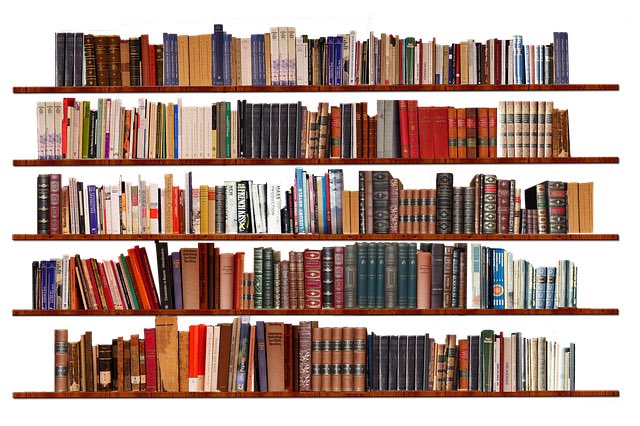The central tendency, mean, median, and mode depict where most data points concentrate, while variability illustrates how far they are. It is exceedingly crucial because the amount of variability demonstrates the generalization one can make from the sample to the population. Low variability is desirable because it implies that predicting information about the population using sample data is well-justified. Contrarily, high variability illustrates decreased consistency, making data predictions harder.

Variability is about how far data points are from each other and the mean. In addition to measures of central tendency, variability measures are other critical, descriptive statistics epitomizing your data.
Variability can also be expressed as spread, scatter, or dispersion. We use the following variables to measure the variability. The first measure is the range, the difference between the highest and lowest values in a given data set. However, the interquartile range yields the middle half of the distribution. In other words, it is the difference between the upper and lower quartiles. The standard deviation is the most used variability, calculated by determining the average distance from the mean. Variance is a derived measure and can be calculated by taking the square of the standard deviation.
The central tendency, mean, median, and mode depict where most data points concentrate, while variability illustrates how far they are. It is exceedingly crucial because the amount of variability demonstrates the generalization one can make from the sample to the population.
Low variability is desirable because it implies that predicting information about the population using sample data is well-justified. Contrarily, high variability illustrates decreased consistency, making data predictions harder.
Some data sets may have the same central tendency with different levels of variability. The reverse can also be true. Suppose you know the central tendency or the variability but not both; you cannot interpret the other. Thus, they both complete your data assessment.
The range depicts the difference between the maximum and minimum values in the distribution. Even though it is easily calculated, it may not reflect the overall trend in the data because it only considers the highest and lowest values in the data set, not yielding any information on the other values in the data set.
Theinterquartile range differs from the range in that it gives you the variation in the middle of your distribution. It tells us more about the distribution because it contains half of the values in the middle. After calculating the first and third quartile in your data set, you can determine the interquartile range by subtracting the higher value from the lower one. The first quartile includes the first 25% of the values, while the third quartile encompasses the last 25%. Even though the interquartile range only involves the difference between the two values, it is more robust against outliers because they portray the middle half of the data set. Therefore, the interquartile range is reliable in both normal and skewed distributions.
For every distribution, afive-number summary can be calculated. It includes the minimum, the lower quartile, the median, the upper quartile, and the maximum. The five-number summaries can be readily depicted with box and whisker plots.
The standard deviation shows the average amount of variability in the dataset. Therefore, it illustrates, on average, the distance of each score lies from the mean. As the standard deviation, so is the variability in the data set.
Variance demonstrates the degree of spread for a given data set, suggesting that a greater spread would imply a larger variation for the mean. The varianceis calculated by squaring the standard deviation. It has a different unit from the standard deviation, making its interpretation more challenging. However, it is beneficial for some crucial analyses, such as Analysis of Variance, where the whole analysis depends on the ratio between-group and within-group variance.
Determining the ideal measure of variability depends on the level of measurement and distribution. For the data measured at an ordinal level, the appropriate measures of variability include the range and interquartile range. In contrast, the standard deviation and variance can also be calculated at interval and ratio levels.
All measures can be employed for normal distributions. The standard deviation and variance should be preferred because they consider all the data in a set but simultaneously suggest that outliers can affect them. However, the interquartile range is most reliable when the distribution is skewed because the outliers do not affect this variable.
Best Edit & Proof expert editors and proofreaders focus on offering papers with proper tone, content, and style of academic writing, and also provide an upscale editing and proofreading service for you. If you consider our pieces of advice, you will witness a notable increase in the chance for your research manuscript to be accepted by the publishers. We work together as an academic writing style guide by bestowing subject-area editing and proofreading around several categorized writing styles. With the group of our expert editors, you will always find us all set to help you identify the tone and style that your manuscript needs to get a nod from the publishers.

You can also avail of our assistance if you are looking for editors who can format your manuscript, or just check on the particular styles for the formatting task as per the guidelines provided to you, e.g., APA, MLA, or Chicago/Turabian styles. Best Edit & Proof editors and proofreaders provide all sorts of academic writing help, including editing and proofreading services, using our user-friendly website, and a streamlined ordering process.
Visit our order page if you want our subject-area editors or language experts to work on your manuscript to improve its tone and style and give it a perfect academic tone and style through proper editing and proofreading. The process of submitting a paper is very easy and quick. Click here to find out how it works.
Our pricing is based on the type of service you avail of here, be it editing or proofreading. We charge on the basis of the word count of your manuscript that you submit for editing and proofreading and the turnaround time it takes to get it done. If you want to get an instant price quote for your project, copy and paste your document or enter your word count into our pricing calculator.
Contact us to get support with academic editing and proofreading. We have a 24/7 active live chat mode to offer you direct support along with qualified editors to refine and furbish your manuscript.
Follow us on Twitter, LinkedIn, Facebook, Instagram, and Medium.
For more posts, click here.
This article explains how to determine variablity in a dataset. To give you an opportunity to practice proofreading, we have left a few spelling, punctuation, or grammatical errors in the text. See if you can spot them! If you spot the errors correctly, you will be entitled to a 20% discount.
How to Determine Central Tendency
19.02.2023
ANOVA vs MANOVA: Which Method to Use in Dissertations?
30.01.2023
How to Specify Study Variables in Research Papers?
14.01.2023
Population vs Sample | Sampling Methods for a Dissertation
14.01.2023
7 Issues to Avoid That may Dent the Quality of Thesis Writing
18.12.2022
How to Ensure the Quality of Academic Writing in a Thesis and Dissertation?
04.12.2022

In drafting a manuscript, thesis, or dissertation, the discussion section is usually one of the last to be written. Notwithstanding, it is arguably the most important section in a manuscript. Due to its relevance, it is usually the most challenging to write, as it requires top-level expertise. This article seeks to lay bare 5 helpful considerations to make when writing a sound discussion section.
Continue Reading
Being proficient in grammar takes years of practice and needs deep knowledge. Yet, you will still end up making grammatical mistakes, and that is understandable. However, when we are talking about academic writing, you need to be exceptionally careful that you do not end up making such mistakes. This article gives you 10 common grammatical mistakes in academic writing. If you are someone who tends to make such mistakes frequently, this article will be able to help you pinpoint those mistakes and fix them.
Continue Reading
Whether you are writing an essay for your publication or working on your research— academic writing style prevails for all types of academic work. It is not anything out of the world but does follow a few rules in terms of style and structure. If you are new to academic writing, the mention of 'rules' can be overwhelming. This article will help you with a few tips that help improve your academic writing.
Continue Reading
Blog writing is an effective way to share your knowledge and ideas with your target group. Here you can dive deep and talk about your favorite topics, showcase your expertise and attract an audience or readers interested in your work. However, creating a perfect blog post can sometimes get overwhelming – from choosing the right topics to selecting the proper format for your articles to picking images that generate interest and engagement, it's no less than a task.
Continue Reading
You have been working hard on your research paper and want to write an excellent dissertation/thesis. You have researched all the materials, and your data are perfect— all you need to do is put them together in a dissertation or thesis. But how do you manage that? While working on the research is not easy, it’s structuring a dissertation or thesis that the main issue lies with. Therefore, if you are struggling with structuring your dissertation or thesis, this article may be of help.
Continue Reading
Choosing a topic for your dissertation or thesis at the end of your master's or doctoral study can become a daunting task. You must select a topic that you find interesting to work on. A dissertation/thesis is a crucial piece of work as it carries enormous credit points at the end of the master's study or postgraduate year. Therefore, you must choose the right and the most suitable topic. Here are some helpful tips for choosing a dissertation and thesis topic that suits you the most.
Continue Reading
Finding a dataset's middle or average is critical and involves measuring central tendency. The central tendency's most common measures include the mode, median, and mean. The mode is the most repeated measure in a data set.
Continue Reading